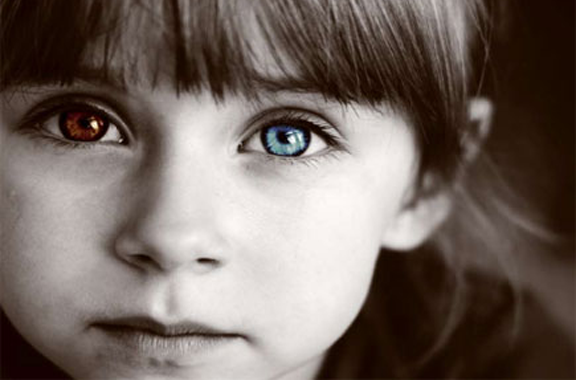How does it feel to be one of the beautiful people? Now that you know who you are, what do you want to be? And have you traveled very far, far as the eye can see?
~The Beatles
Baby, you might not be a rich man or woman in the conventional sense, but if you are Caucasian, you have an untold wealth, the wealth of freedom. Likely, while at times you may feel oppressed and as if others wish to silence you, ultimately, you silence yourself – at least when in the presence of those whose color you may want to tell yourself you do not see. In our society Anglos pride themselves on being colorblind, when indeed, they are by choice, color-mute!
What is most troublesome is that in a white world pinkish persons have a choice, while those whose complexion is Black, Brown, Coffee, Caramel, Olive, or a deep-dark golden hue have none. On occasion these persons might be given a pass – perhaps because their “best friend” is…you, me, or we, one of the beautiful people of privilege.
This topic may not a comfortable one, but it is essential to discuss, so says Teacher Jane Elliott. Please sit in on one of her classes. Watch the Blue Eyes turn green after a time, green with rage and resentment. Yes, people react when they feel slighted, or do when given the permission granted only to whites.
Let us enter Ms. Elliott’s class. The lesson has already begun. We come into the scene during what is titled Part II. After about three minutes and 19 seconds
Confused? Let us listen, look at others and ourselves. Perhaps we will learn as Jane Elliott teaches,.
Elliott: “No. You don’t come back in here until you’ve apologized to every person in this room because you just exercised a freedom that none of these people of color have. When these people of color get tired of racism, they can’t just walk out because there’s no place in this country where they aren’t going to be exposed to racism. They can’t even stay in their own homes and not be exposed to racism if they turn on their television. But you, as a white female, when you get tired of being judged and treated unfairly on the basis of your eye color, you can walk out that door, and you know it won’t happen out there. You exercised a freedom they don’t have. If you’re going to be in here, you’re going to apologize to every black person in this room. And do it now … and every person of color.”
Student: “I’m sorry there’s racism in this country…”
Elliott: “Bullshit! No, you’re not going to say ‘I’m sorry there’s racism.’ You’re going to apologize for what you just did.”
Student: “I will not apologize because it’s not a matter of race always…”
Elliott: “Out.”
What just happened and why? Perhaps it was a lesson of a lifetime or it could be if we acknowledge that one of the beautiful people found themselves on the receiving end of racism. The pain that the person felt is palpable. Resentment rang out. Other students in the room reacted. The responses varied. For the most part, those with brown eyes, Black and Brown skin responded but not as the white pupils did. In truth, we cannot know what color, class and consciousness does. But we have clues. Consider who acts as if they have right to speak and uses it and who is more humble. Ask yourself why this might be and most importantly look at what you hide from yourself.
That is what Jane Elliott did, first in 1968. It was April 5, 1968, one day after Civil Rights Leader; Martin Luther King Junior was assassinated. It was a Friday. Steven Armstrong stepped into Jane Elliott’s third-grade classroom in Riceville, Iowa. And said “Hey, Mrs. Elliott. They shot that King yesterday. Why’d they shoot that King?” The lesson began. All 28 children in class that day found themselves thrust into a world of reflection. Rather than offer a simple statement in passing, the Iowa teacher took the opportunity to ask a room full of white children, “How do you think it would feel to be a Negro boy or girl?” Before any answered, Jane Elliott, seeing their beautiful puzzled faces declared, “It would be hard to know, wouldn’t it, unless we actually experienced discrimination ourselves.” She continued, “Would you like to find out?”
A chorus of “Yeahs” were heard. Such is the wonder of a young mind at work; children untouched by the reality of race relations are willing to explore what adults find threatening. On that mournful day a ray of light beamed through the rafters in the form of a glorious lesson. Later Ms Elliott would term what became a series, as exercises. All those decades ago, the children and their classroom Teacher did not imagine that beautiful people would continue to exert their rights in ways that killed a mind, body, or spirit. No one thought that racism would raise its head over and over again, although there were clues.
When the people of Riceville, population 840, heard of the children’s experience that day, Jane Elliott was “all but run out of town.” While many embraced her message and methods, “sometimes cited as a landmark of social science,” more felt vulnerable, susceptible, and exposed. The beautiful people may think that they know who they are, but rarely do they allow themselves to see or be as they believe is best. How might this be true? Think of the numbers of sighted people who say they are colorblind. Ask yourself are these persons color-mute. That is the question Educator Jane Elliott has asked for decades now. If you choose, please allow her to ask you.
References and Resources…
- Lesson of a Lifetime. By Stephen G. Bloom. Smithsonian. September 2005
copyright © 2013 Betsy L. Angert












Leave A Comment